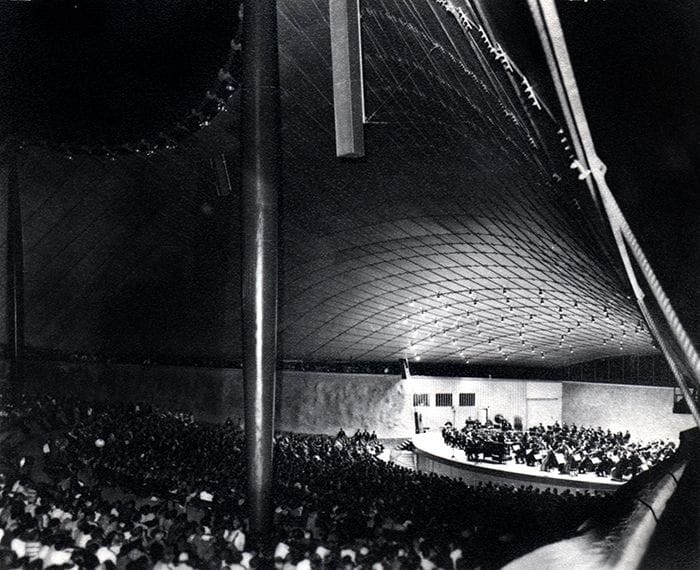Join Phil Gardiner from WSP for a live presentation on the history and structural engineering of Melbourne’s iconic Myer Music Bowl, including drawings and archival images of the completed bowl and construction shots.
The Bowl precedes the major works of Frei Otto for the Munich Olympic games and represents the third in a series of 1950’s beautifully engineered structures for Bill Irwin. The first of course being the Melbourne Olympic Pool where the engineering solution adopted the form of the pool hall and used the tie rods and inclined seating trusses to create a post-tensioned steel structure, the second was the Academy of Science Dome which is a mathematically pure compression shell and the Bowl being the pure tension structure.
As described by Conrad Hamann in his research on the history of the Irwinconsult practice; the Architecture and Engineering design of the Bowl are defined by the mathematically pure forms of the draped catenary cables supported on two columns, themselves parabolic in profile. The cables are arranged in roughly perpendicular directions with some draped in a concave shape and the others convex thereby providing support for both gravity loads downwards and wind loads upwards. The cladding which provides weatherproofing and acoustic reflection is a tile work of laminated aluminium and plywood panels known as Alum-Ply, a cladding developed by the French aviation industry in the lead up to WW2.
Photo credit: WSP









